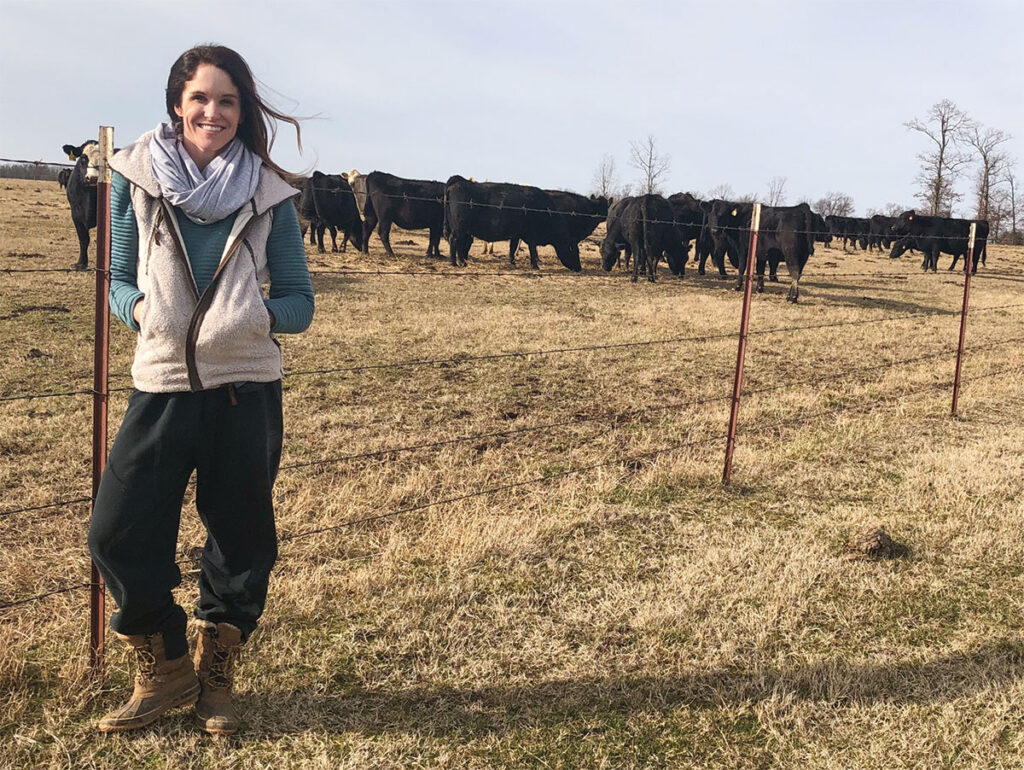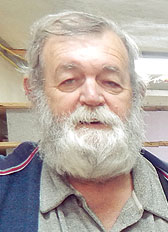
Circle L Ranch has multiple facets of its operation
Circle L Ranch is a five generation operation, working on the sixth, dating back to 1884. After the Civil War, S.D. Leonard came by covered wagon from Georgia. S.D.’s brother Silas homesteaded with S.D. purchasing land nearby. That purchased land became Circle L Ranch with additional land acquired through the generations. The ranch is now comprised of 800 acres used for a cow/calf operation with a highly specific and sequenced breeding program. The ranch is family owned with Mike and Tricia Leonard living in one house and their daughter Amanda Price and her family living in another house nearby.
Amanda showed animals in 4-H growing up, mainly market steers in her high school years. When Amanda was 15 and showing a steer at the Arkansas/Oklahoma State Fair, she was introduced to Levi Price, her future husband.
The couple attended college at Oklahoma State until Levi graduated. After his graduation, he began working at Decatur State Bank in Siloam Springs, Ark. Amanda transferred to the University of Arkansas her last year to finish her animal science degree. Levi has now been a loan manager at the Arvest bank in Siloam Springs for the last three years. The couple has two children, son Sayer, who is 3, and daughter Shae, who is 10 months old.
Amanda does a lot of the day-to-day work on the farm, along with her dad when he isn’t running his dirt work business. Levi chips in on the weekends. Amanda credits all her knowledge and experience to watching and working along with her father and his father before him.
“It’s a long legacy that I am so thankful to be a part of,” Amanda said of the Century Farm. “Not many people are fortunate enough to have a family history like ours to help them.”
While Amanda knew early on that she wanted to be in the cattle industry, the real turning point occurred when she won grand champion market steer at the Arkansas State Fair when she was 16. Her steer brought $16,000, which she used to purchase a new, 2004 Chevy diesel truck, which she still owns and plans to never sell.
The ranch supports 250 heavily Angus-influenced breeding females and 10 registered Angus bulls purchased from 44 Farms in southern Texas and Jac’s Ranch in Bentonville, Ark. The linchpin of the Circle L Ranch‘s cow/calf operation is purchasing bulls from 44 Farms on a calf buyback program with the meat from those calves appearing in the Walmart certified Angus beef case.
Heifers, all of which come from the ranch’s herd, are bred by AI which eliminates the need for having a low-birth-weight bull.
“Being able to utilize AI, I can outcross genetics and retain heifers, which increases their genetic potential since I am able to use high-quality bulls.”
Amanda uses ultrasound on all heifers to check for proper development, as well as pregnancy checks all breeding females.
The females are in two groups, with about half bred by embryo transplant in the spring or AI. They run a cooperative herd with their cattle, putting others embryos into their cows, almost like a surrogate mother. Those calves are raised on the farm and then delivered back to the embryo owner after weaning. They have been doing this for almost 15 years. The remainder are bred naturally by the ranch’s cadre of bulls. These bulls are selected by genotype and phenotype, mostly for growth.
“Since I can AI heifers, we don’t have to use a low birth weight bull. That means the bulls we purchase can be selected for bigger growth potential.
“The last three years we have sold back to 44 Farms, which uses a third-party verification indicating that the calves meet the quality standards of the Angus breed. Calves are weaned at 6 months and retained until they were yearlings when ownership is transferred back to 44 Farms for finishing, usually at Western feedlots.
“This year we sent two pot loads of 600- and 700-pounds calves to a Nebraska feedlot,” Amanda said. “We have found a niche that really works for us right now by marketing our calves back to 44, in addition to occasionally selling our commercial heifers as breeding stock.”
Strict culling criteria is a critical element of the ranch’s program. While genetics and performance are high on the prerequisite list, having a good disposition is an equal part.
Cattle are worked twice a year, with the exact vaccine protocol determined annually by veterinarian Marion Harris in Gravette.
Amanda believes life experience combined with being open to learning and changing keeps the cattle business always interesting.
Calves start receiving 14-percent protein creep feed at 3 months of age and continue with grain and primarily Bermudagrass hay until they leave the ranch. Cows and bulls are basically grass- and hay- fed, with free choice, loose and high magnesium mineral available to all cattle.
The ranch also produces its own hay from two cuttings on 200 rotating acres. Cattle are rotated through their 10 pastures approximately every 30 days according to grass growth. Grass is mostly Bermuda with some fescue and naturally occurring ryegrass and clovers. The land is fertilized with chicken litter obtained locally with little difficulty. Weeds are controlled by spraying in the spring, with the hay ground sprayed first and the remainder on a rotating basis. Spot spraying is usually unnecessary because the ground has been continually nurtured for a long time.
“The cattle industry is always changing,” Amanda said. “To be successful, cattle producers have to keep up with those changes and look for more ways to diversify their income streams as well as using all of their resources to maximize potential.”






